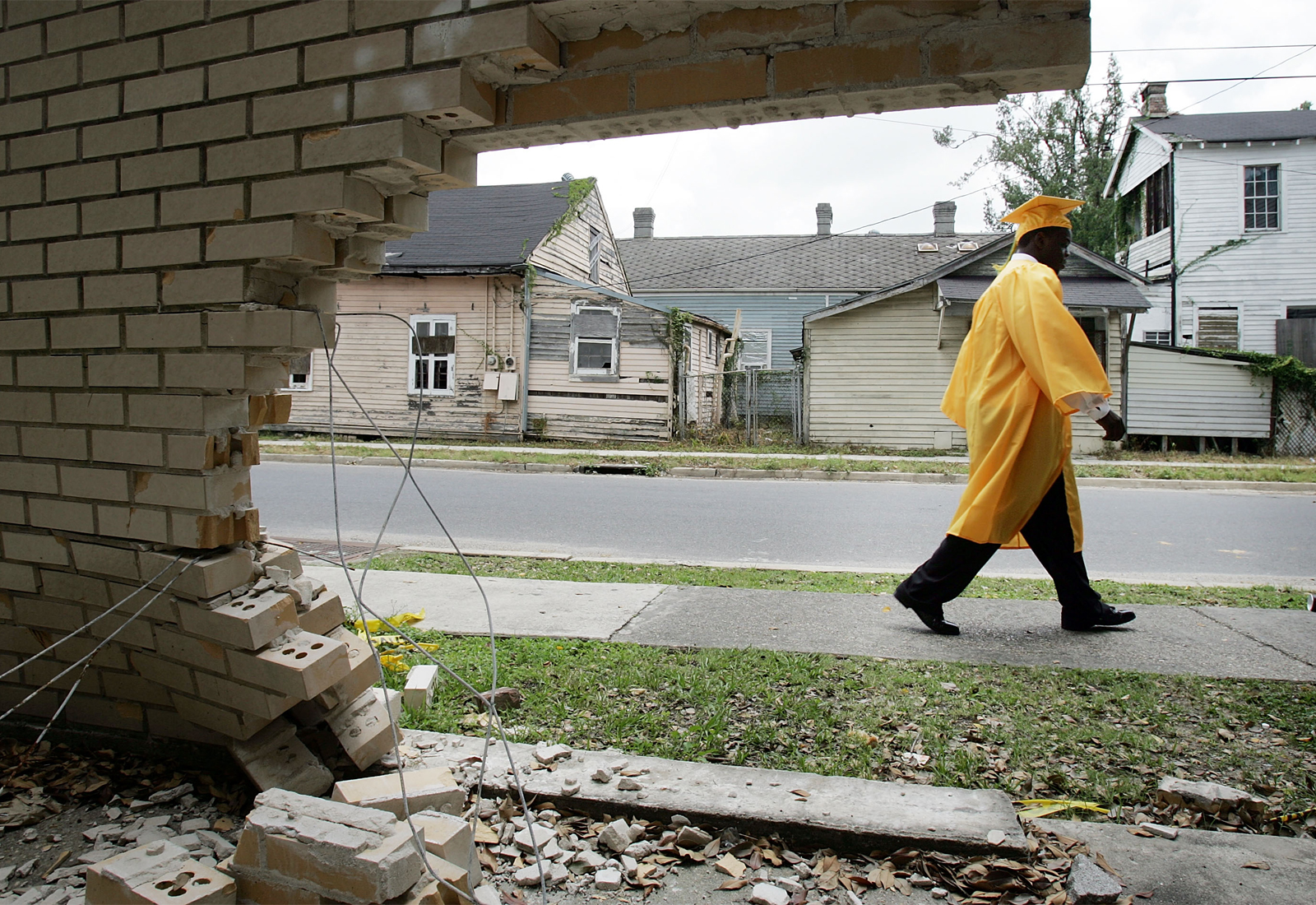With climate change increasing the severity of natural disasters across the U.S., the consequences for communities in the paths of hurricanes and wildfires are far-reaching — and the effects on essential services like education are only beginning to be understood.
The most vulnerable Americans bear the brunt of this disruption: According to a new federal government report, U.S. public school districts that have been hit by climate disasters have higher rates of students experiencing social vulnerabilities such as housing instability and food insecurity. The report, released earlier this week by the Government Accountability Office, or GAO, looked at school districts that received federal disaster recovery grants and found that these schools face a challenging recovery process that can exacerbate educational inequalities.
More than 300 presidentially-declared major disasters have occurred across 50 states and U.S. territories since 2017, the GAO wrote in its January 18 report to Congress. “Many natural disasters have had devastating effects on K-12 schools and the communities in which they are located — especially socially vulnerable communities,” the office concluded.
The GAO found that more than half of all public school districts were in counties that experienced presidentially-declared major disasters from 2017 through 2019, representing more than two-thirds of all U.S. students. Five percent of all K-12 school districts received funding from the Federal Emergency Management Agency’s Public Assistance program and the Department of Education’s Immediate Aid to Restart School Operations program (known in short as the Restart Program) following these disasters. Many of these school districts are located on the East Coast, Gulf of Mexico, and in the Caribbean, which were most commonly impacted by hurricanes. Districts in the Midwest, West, and on the Pacific coast experienced other disasters such as tornadoes, wildfires, and volcanic eruptions.
The GAO found that the districts receiving federal grants tended to have above-average rates of students from socially-vulnerable groups compared to all school districts nationwide, with higher proportions of students who are eligible for free or reduced-price lunch, for example.
The aftermath of climate disasters on students who have experienced the cumulative effects of poverty, stress, and housing instability can lengthen the disaster recovery process. School officials interviewed for the GAO’s report noted that students struggled with the loss of their homes and belongings, food insecurity, a caregiver’s job loss, and disconnection from their social networks. In some cases, years after a disaster students were still struggling with unmet psychological and emotional needs, and some officials reported that on-going access to mental health care was crucial to the recovery of students who had suffered the trauma caused by disasters like hurricanes.
This trauma can “follow students into the classroom and affect their ability to focus on academics,” the report noted. School officials in a large majority of districts told the GAO that educators needed to “prioritize emotional recovery before academic recovery could begin.” Some school officials suggested that standardized testing requirements be waived for schools undergoing disaster recovery, to lower stress levels.
One county education official told the GAO that the school districts in their county had narrowed gaps in high school graduation rates and college attendance rates between white and Latino students over the previous decade — but after climate disasters, those rates worsened for Latino students. Other educational officials shared that the lost instruction time after disasters most severely affected vulnerable students, including those with disabilities, English learners, and those from low-income families.
The GAO conducted the audit as part the provisions outlined in the federal Additional Supplemental Appropriations for Disaster Relief Act of 2019, which provides for a review of how school districts who received federal disaster recovery grants served students from certain socially-vulnerable groups, what those recovery experiences were like for school districts in socially-vulnerable communities, and how the Restart program supported that recovery. To do this, the GAO reviewed grant reports submitted by states as part of the Department of Education’s Restart program. The office found that districts used the funds to provide counseling and tutoring to students, repair school facilities, replace damaged textbooks and laptops, and provide transportation to displaced students.
To address declines in academic achievement that occur in the aftermath of disasters, school officials emphasized the importance of offering additional academic and supportive services. One state educational agency sought Restart funding to help students after disaster-related school closures and homelessness caused gaps in the learning process. Other districts addressed basic necessities such as food, clothing, toiletries, housing, and counseling, so students could focus on learning, while others provided tutorials, as well as after-school and summer programs to counter lost classroom time. Ultimately, the GAO concluded that school districts serving socially-vulnerable students may need more recovery assistance compared to districts with fewer vulnerable students.



